Boot: 2024-2025 Scarpa Maestrale RS
Test Locations: Crested Butte, CO & Revelstoke, BC
Test Duration: 13 days
Stated Flex: 125
Available Sizes: 24.5–32
Stated Last (size 27): 102 mm
Stated Range of Motion: 61°
Size Tested: 25.5
Blister’s Measured Weight (size 25.5):
- Shells, no Liners: L: 1143 g & R: 1147 g
- Liners, no Footbeds: L: 235 g & R: 234 g
- Shells + Liners = 1378 & 1381 g
- Stock Insoles: 20 g each
- Removable Spoilers: 37 g each
Additional Specs
Stated Forward Lean: 16° (adjustable by ± 2º)
Stated Boot Sole Length (size 25.5): 299 mm
Buckles: micro-adjustable upper buckle, “HRS” instep strap buckle, “Wave Lite” forefoot buckle
Power Strap: cam-style Booster® Active Power Strap
Shell Material:
- Cuff: Pebax® Rnew® w/ Carbon Core
- Lower Shell / Shoe: Grilamid® BIO w/ Carbon Core
- Tongue: Pebax
Soles: full-length rubber Vibram Cayman LT (ISO 9523)
Tech Fittings: toe & heel
Binding Compatibility: tech / pin & Multi-Norm bindings

Intro
The Maestrale name has been in Scarpa’s touring boot lineup for many years now, occupying a class somewhere between 4-buckle “free-touring” boots and lighter, more uphill-oriented options. And for as long as the Maestrale has been around, it’s always been a versatile option that’s easy to recommend to a lot of backcountry skiers.
However, back in the 2023-2024 season, Scarpa tweaked almost every aspect of the Maestrale boots. We’re always nervous when a product we think is already great receives an update, and we’ve been testing the latest Maestrale RS to find out if it’s still a standout boot in its class. We’ll get into our on-snow takeaways below, but first, let’s look at the details of the Maestrale RS.
The Maestrale Series
This series of boots currently consists of four models on the men’s/unisex side: the Maestrale RS, Maestrale, Maestrale Tactical, and Maestrale Remade. The Maestrale and Maestrale RS share the same 102 mm last, with the stiffer Maestrale RS having a stated 125 flex and the Maestrale a 110. Otherwise, these two share almost every detail in common, apart from an elastic, cam-style power strap on the Maestrale RS and a static one on the Maestrale.
The Maestrale Tactical and Maestrale Remade both share a 101 mm last and 110 flex rating. The Maestrale Tactical is a simpler, more afforable alternative in the Maestrale line, while the Maestrale Remade is a limited-edition model that Scarpa is calling “the most planet friendly and sustainable ski boot we’ve ever produced.”
On the women’s side are the Gea and Gea RS, which mirror their men’s / unisex Maestrale counterparts, but with stated flexes of 100 and 120, respectively.
Shell
Scarpa uses a carbon-infused, partially bio-based Grilamid® (polyamide) plastic for the latest Maestrale RS’s lower shell. The cuff is made from Pebax® Rnew®, a polyether / polyamid mix that is also carbon-reinforced and partially bio-based. And the tongue uses standard Pebax.
The current Maestrale RS reportedly features more carbon reinforcement than the previous version, with the goal of improving support and precision while skiing.
This latest Maestrale RS has an updated last, with the widest part of the boot being slightly further back, as well as a reshaped toe and heel pocket.
The Maestrale RS’s “hybrid cabrio” shell layout hasn’t changed much in the newest boot. It still features a flexible tongue that covers the open-throat top of the lower shell; the upper cuff overlaps similar to traditional 2-piece boots.
Liner
The Maestrale RS uses a lightweight liner with flex bellows behind the Achilles area. The included spoilers can be added to the back of the liner via velcro, and the liner uses heat-moldable, Intuition-brand foam.







Walk Mechanism
The Maestrale RS uses a pretty typical external, spring-loaded ‘hook and bar’ walk mechanism lever that allows for 61º of stated range of motion when fully open. The walk mechanism can also be moved up or down on the cuff, allowing the forward lean of the boot to be modified ± 2º from the middle position 16º.
This was one of the updates between the last-gen Maestrale RS (we’ll call that v3) and the current, v4 model; the new boot’s walk mechanism is spring-loaded and now features the ‘hook’ part on the lower shell and the ‘bar’ part on the lever.
Buckles
There are 3 closures on the Maestrale RS. The top cuff buckle is a pretty typical, micro-adjustable buckle with a metal hook. Over the instep is a ratchet-strap-style buckle, and over the forefoot is Scarpa’s “Wave Lite” buckle that uses a z-shaped cable and a buckle with 3 “steps” for the cable.
Power Strap
The Maestrale RS has a very nice elastic, cam-style strap produced in partnership with Booster. The camming part of the strap hooks onto the main elastic section, and the cam can never fully come off the static strap on the outside of the boot.
Soles, Tech Inserts, & Binding Compatibility
The Maestrale RS features a full-length rubber sole and fits the ISO 9523 (aka, “touring”) boot sole norm. Combined with the Maestrale RS’s toe and heel tech inserts, that means it can be used with tech / pin bindings and multi-norm bindings that can be adjusted to fit ISO 9523 soles.
Weight (and Comparisons)
The Maestrale RS weighs in at 1380 grams per boot for the size 25.5 shells and liners. That’s pretty competitive in the touring boot class, particularly relative to its stated flex rating, but it’s not an outlier by any means.
For reference, below are our measured weights for some comparable boots. Each number is the average weight per boot for the stock liners and shells. Pay attention to the size differences to keep things apples-to-apples.
1354 g | v2 Tecnica Zero G Tour Pro (size 27.5)
1367 g | Dalbello Quantum Free Pro (size 27.5)
1372 g | Atomic Backland XTD Carbon 120 (size 26.5)
1376 g | Dynafit Ridge Pro (size 27.5)
1380 g | Scarpa Maestrale RS (size 26)
1483 g | Dynafit Radical Pro (size 26.5)
1484 g | La Sportiva Vanguard (size 26.5)
1531 g | Scarpa 4-Quattro Pro (size 26.5)
1568 g | K2 Dispatch Pro (size 27.5)
1580 g | Roxa R3 130 T.I. (size 26.5)
FULL REVIEW
Fit
Dylan Wood (5’10.5”, 160 lbs / 179 cm, 72.5 kg): I’ll start this section off the way we usually do: my feet are not yours, and if you’re considering this boot, go try it on — ideally with the help and insight of an experienced bootfitter. But, here, I’ll do my best to summarize the most notable aspects of this boot’s fit.
We tested the Maestrale RS in the size 25.5, which shares the same shell as the size 26, though the size 25.5 uses a lower-volume liner than the size 26. I have been skiing size 25.5 boots in the resort for the past few seasons, but still mostly tour in size 26.5 boots. With that context in mind, the 25.5 Maestrale RS provided a pretty ideal touring-boot fit for me.
Its lower shell is moderately wide, with a 102 mm stated last width for the size 26 shell. However, the fit doesn’t feel very tall / voluminous over the top of the foot. My feet are quite narrow (~93 mm), and in the resort, I am usually in “low-volume” or recreational race boots with last widths around 96-98 mm. Unsurprisingly, I found the Maestrale RS’s fit a little loose (side-to-side) in the forefoot. However, it actually felt adequately snug in terms of vertical space; the tops of my relatively flat feet were nicely pressured by the top of the shell.
Moving back to the ankle area, the Maestrale feels roomier, especially when paired with my skinny ankles. When in walk mode with the middle strap buckle completely open, there was enough room in the Maestrale’s ankle pocket for my ankles to move around enough to cause a blister on the inside of my ankle, just under my inner ankle bone (which was easily treated with some leukotape).
I found that cranking down the ankle buckle would compromise the Maestrale’s range of motion when in walk mode; while that would have likely helped reduce the chance of any hot spots forming, I chose to use leukotape instead, which worked great. So, if you have skinny ankles like me, expect to need to implement some sort of solution here. If you have wider ankles, the fit might be ideal.
Moving up through the cuff, I also found there to be a lot of volume, particularly for my skinny calves. Solving this was relatively easy; adding the included liner spoilers takes up some room, and moving the cuff buckle ladders further away from the buckle allows me to crank down the cuff buckle more.
I also did a lot of experimenting with the two rubber shims that Scarpa includes with this boot (one is 2.5 mm thick and the other 4 mm). I always used the boot with one of them in there, given how low-volume my feet are. This took up some unwanted room and improved the boot’s fit and performance (for my feet).
I also appreciate that they include two options. I found myself mostly using the 2.5 mm shim on longer and warmer tours, where comfort was more important since my feet would spend more time in the boots and swell over the course of the day. I used the 4 mm shim on shorter tours, where I was okay with a bit less comfort in walk mode given the tighter fit and better performance in ski mode.
Luke Koppa (5’8”, 155 lbs / 173 cm, 70 kg): Dylan and I have very different feet, but I agree with all of the generalizations he made. (For reference, my feet measure a little over 100 mm at their widest point and I typically ski in size 26.5 alpine boots with stated last widths ranging from 97-100 mm.)
I have a fairly low instep and liked how secure the Maestrale felt over the top of my foot. Through my midfoot, the fit was pretty comfortable, though I would occasionally get some pain / pressure around the widest part of my foot, particularly in warm weather. The toe box felt roomy enough, but, like Dylan, I had more room around my (fairly skinny) ankles than I’d prefer (despite the current Maestrale RS reportedly featuring a lower-volume ankle pocket).
If I owned the boot, I’d probably work with a bootfitter to potentially add some foam J-pads to the ankle area to lock it down a bit better. Overall, though, this boot feels lower-volume throughout than many “102mm-last” boots I’ve tried. And I’d say the same of Scarpa’s 100mm-lasted 4-Quattro series, which fit lower-volume overall than most other boots I’ve tried with the same stated last width.
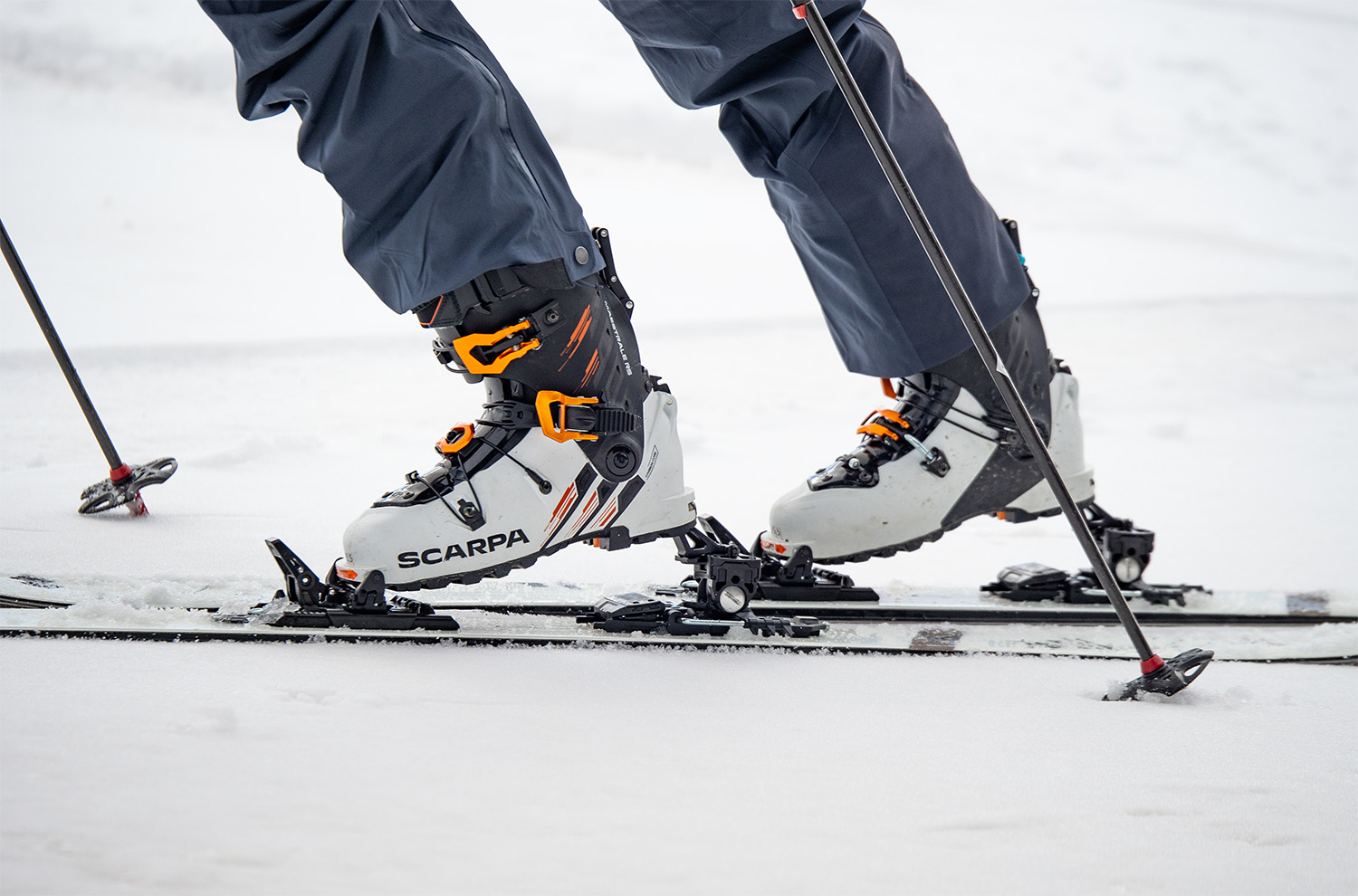
Walk Mechanism & Transitions
Dylan: In my experience, the Maestrale RS’s walk mechanism has been easy to use and very reliable. It’s features a pretty long, metal lever that hooks onto the shell for ski mode, then completely inverts, pointing to the sky for ski mode. I’ve found these sorts of walk mechanisms very easy to use and trust, and the same is true of the one on the Maestrale RS.
To pop it into walk mode, you just pull it away from the shell while wiggling a bit back and forth in the boot to find the angle of least resistance for the cuff. The lever then swings (spring-loaded) upward and completely away from the lower shell. I also like this design because the walk mechanism lever usually ends up sitting on the outside of my snow pants, so I can easily look down, see it, and confirm I am in walk mode.
Switching the Maestrale RS back into ski mode is equally easy; you swing the spring-loaded lever down until it is pressing against the rail on the lower shell, and then you rock back and forth a few times again until the hook locks into place on the rail.
I never had the Maestrale RS’s walk mechanism unintentionally switch from walk to ski mode, nor ski to walk mode. It’s been super solid and reliable, and I haven’t been able to notice any “play” in it when in ski mode. Another great thing about the Maestrale RS’s walk mechanism is the built-in ability to adjust the forward lean of the boot to make it either more upright or angled farther forward. The boot comes set at 16° out of the box, and you can adjust it ± 2°. This is easily done with a screwdriver, and while it’s not something you’d want to do in the field, it’s a super easy task to do from home or a hut.
Overall, I had no complaints about this boot’s walk mechanism, and it’s another great example of why I think just about every touring boot should use a similar style lever (which, to be fair, most do).
Luke: Not much to add here. The Maestrale’s walk mechanism is similar to those used on many other touring boots, and there’s a reason this sort of design has become so popular — in general, I’ve found it reliable, secure, and easy to use.
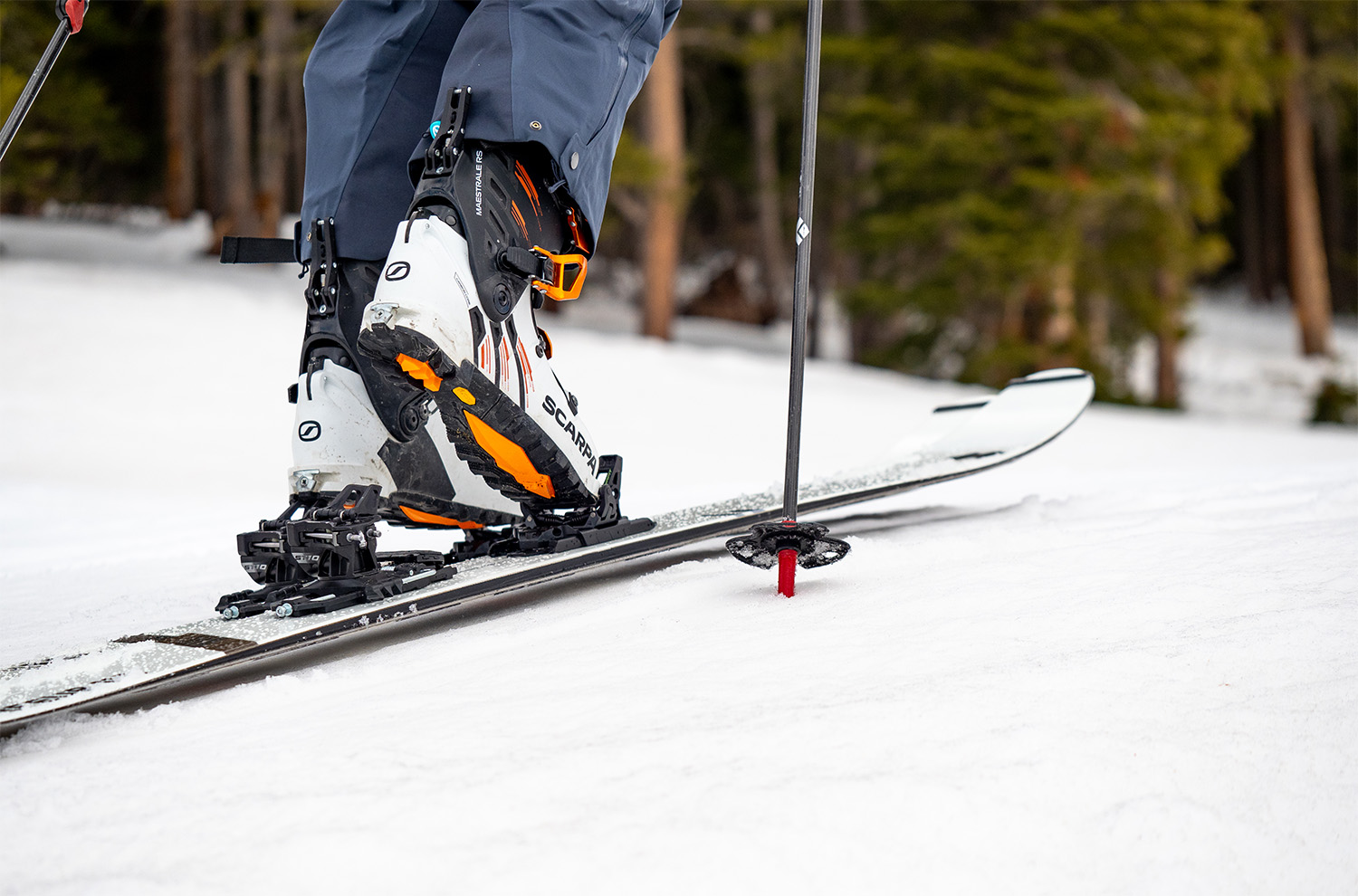
Uphill Performance
Dylan: The Maestrale offers solid uphill performance without really blowing me away in any regard.
For me, it provides ample range of motion, both in the forward and rearward directions. My ankle joints are pretty average in terms of flexibility, and I find that the Maestrale RS doesn’t hinder my natural touring stride in any way — the boots have a bit more range of motion than my actual body does. When taking long strides on flat skin tracks or road exits, I have more than enough room in the forward direction of the boot to flex my ankle forward when pushing off the back ski, and adequate freedom with the rearward movement of the cuff when extending my front leg forward to take my next step.
The buckle configuration of the Maestrale RS also makes shifting to uphill mode easy. I preferred to run the lowest “Wave Lite” forefoot buckle on the loosest rung of its 3-position ladder when going uphill. For the ankle strap buckle and the cuff buckle, I could get enough room in uphill mode by simply flipping up each buckle, leaving the hook and strap on the setting that works best for me when going downhill. This definitely saved me some time with transitions.
As I mentioned earlier, those with skinnier ankles might need to tape their feet and/or modify the liner to reduce movement inside the shell. Again, your best bet is to go to an experienced bootfitter so they can identify which boots make the most sense for your feet. That said, I think any ski tourer should get familiar with taping and other techniques to prevent / reduce / treat blisters, since you or someone in your party will almost certainly have to deal with that at some point.
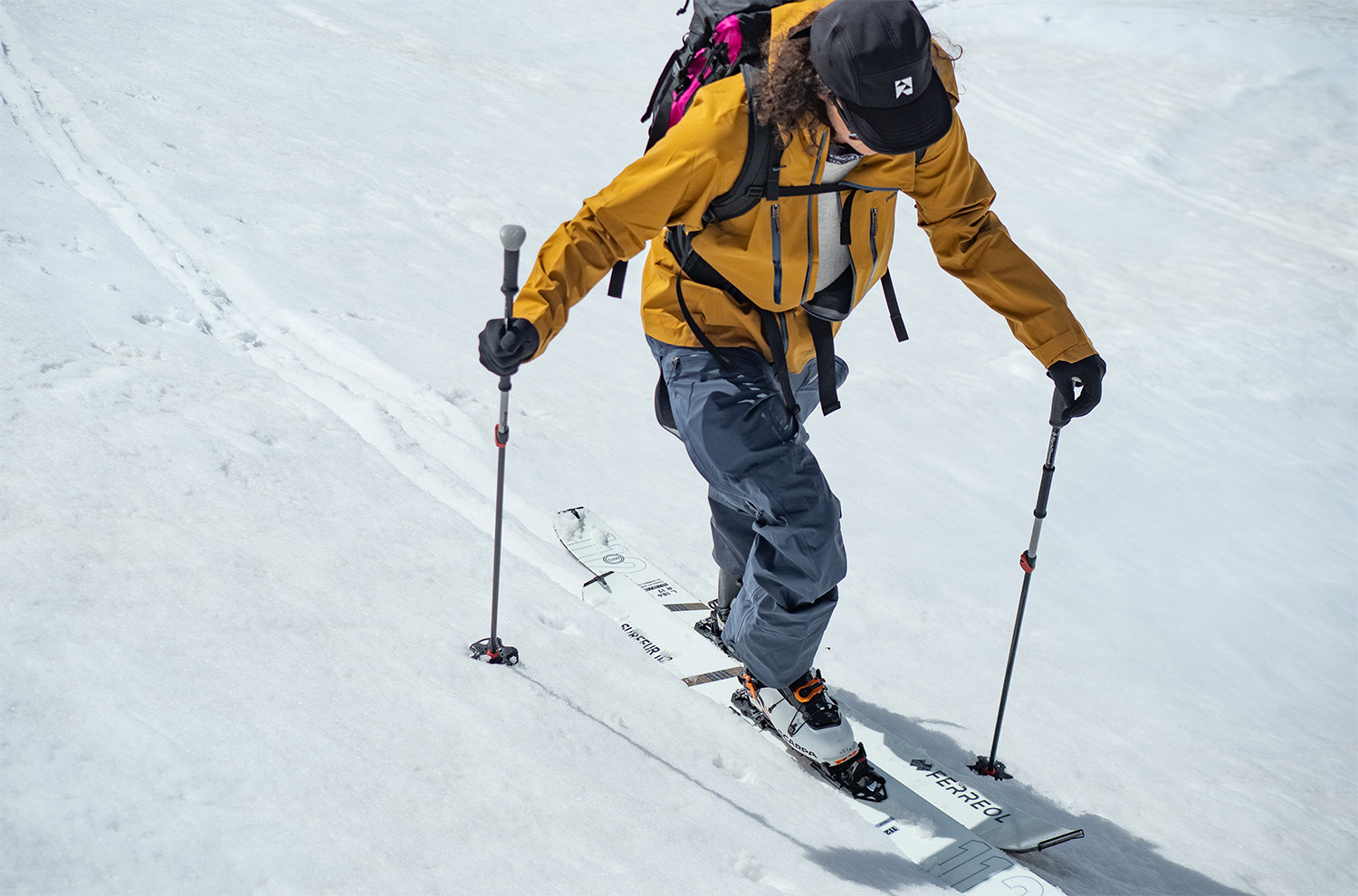
At about 1380 grams per boot (size 26), the Maestrale RS is lighter than almost all 120+ flex 4-buckle touring boots and pretty average for 3-buckle boots with similar stated flex ratings. I don’t really have any major takeaways here, other than that I think the Maestrale RS comes in at a very reasonable weight for what it is and how it skis downhill (more on that just below).
The lateral stiffness of the Maestrale RS also feels appropriate for a boot in this class. When traversing off-camber skin tracks, the boot has enough support to control your skis under your feet, making sure you’re getting enough purchase with your skins on the snow surface. On the other hand, I find that too much lateral stiffness can also be annoying on off-camber surfaces, where a stiff cuff can force your lower leg to exactly match the angle of your ski, which can be annoying and uncomfortable. In my experience, the Maestrale RS has just enough support to confidently navigate off-camber skin tracks without forcing your lower leg into uncomfortable angles.
Luke: Overall, I think the Maestrale RS goes uphill quite well, relative to its downhill performance.
While I try to stick to shorter strides while skinning, I’m not always consistent; when taking longer strides, my forward and rearward range of motion does feel slightly limited by the Maestrale RS, but I only notice that near the ends of my ankles inherent range of motion. I don’t notice much resistance at all if I have the ankle and cuff buckles fully open, but I preferred to keep the ankle strap fairly tight on the uphill to limit ankle / heel movement. As Dylan noted above, tightening the Maestrale’s ankle strap does slightly reduce its effective range of motion while skinning.
In terms of overall range of motion, I’d say the Maestrale is ‘slightly’ to ‘significantly’ better than most freeride touring boots in the 1500–2000+ gram range. Looking to the other side of this category, I definitely feel a difference in usable range of motion when switching from the Maestrale RS to more uphill-oriented boots in the >1000–1300 gram range, such as the Scarpa F1 LT, Tecnica Zero G Peak Carbon, Salomon S/Lab MTN Summit, etc.
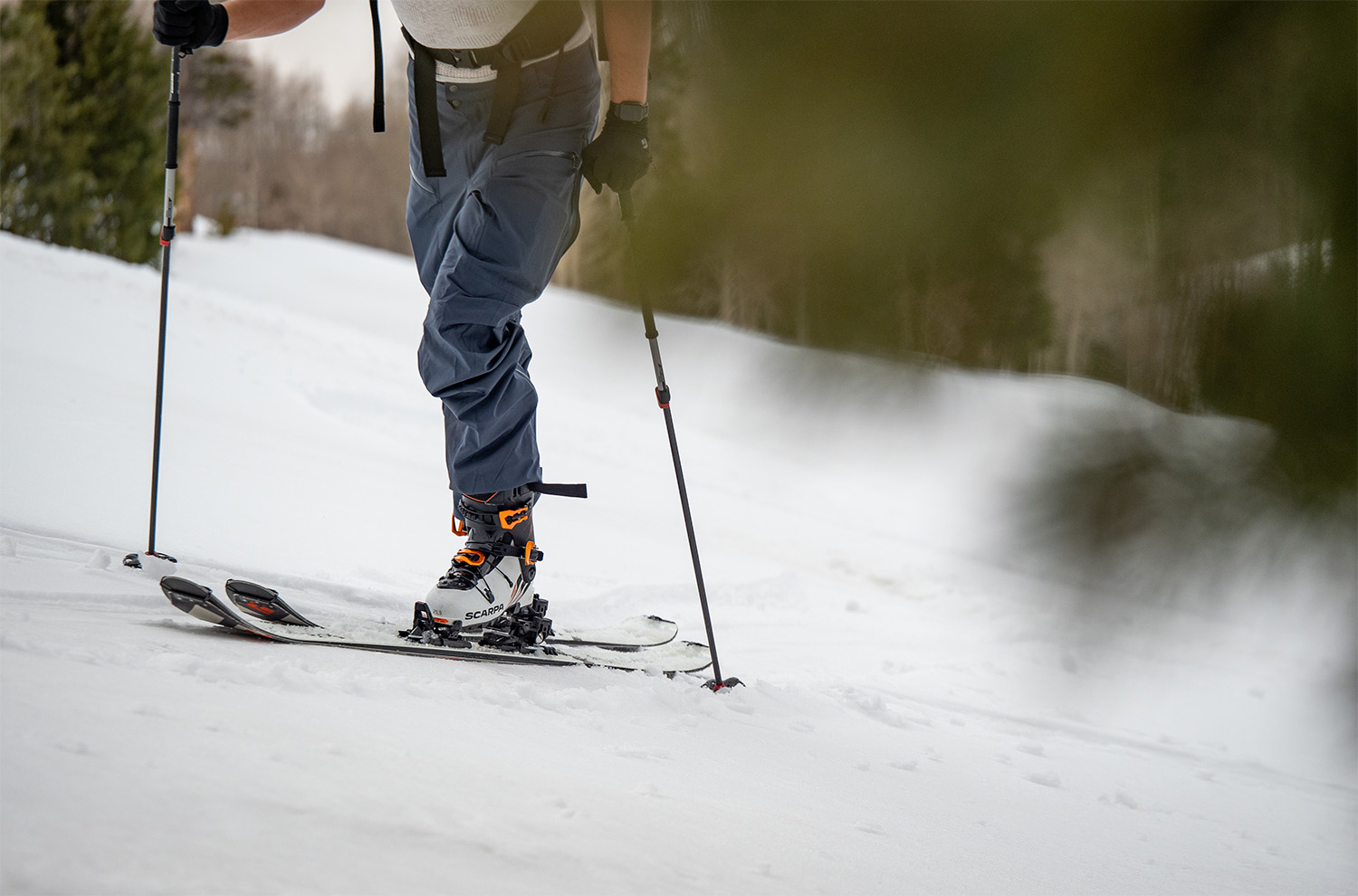
Downhill Performance
Dylan: The Maestrale RS isn’t a super stiff freeride boot, but it provides good enough downhill performance that most skiers should be happy with how it feels while skiing.
Its flex rating of “125” seems appropriate / reasonably accurate when compared to other touring boots that come in at similar weights. If you’re comparing it to fixed-cuff alpines boots, I’d call the Maestrale RS more of a 110 or 120. Most 4-buckle “130-flex” touring boots, such as the Tecnica Zero G Tour Pro and Scarpa 4-Quattro XT, are definitely stiffer, but the Maestrale RS isn’t softer by much.
With the Maestrale RS, I didn’t have a problem driving wider, heavier touring skis like the 188 cm WNDR Intention 108 and 184 cm Ferreol Surfeur 112. The Maestrale RS is also pretty stiff in the rearward direction; in ski mode, it feels quite supportive when you accidentally get into the backseat when skiing downhill.
On the way down, the Maestrale’s lateral stiffness also feels adequate for its class. When skiing wide skis on firm snow, it didn’t feel quite as precise laterally as I’d prefer, but that’s really the only time I noticed a lack of lateral stiffness. Most people’s goal when touring on wide skis is to avoid firm snow, so I don’t think many folks will find this to be a significant issue.
For a variety of reasons, I don’t recommend spending significant time skiing the resort in a touring boot, especially one as light as the Maestrale RS. A day or two here and there, sure. But compared to fixed-cuff alpine boots, boots like the Maestrale RS often present significant compromises in terms of fit, stiffness, suspension, and/or long-term durability.
As for the Maestrale RS’s geometry, I made some tweaks to make it ideal for my preferences. For reference, I tend to prefer boots with forward lean angles around 13º. As noted above, I installed the Maestrale RS’s spoilers at the back of the liners to take up some more room around the cuff, but this also put me a bit farther forward than I’d like to be on the way down. I compensated for this by adjusting the forward lean on the walk mechanism back to its most upright position (reportedly 14°). In that configuration, I found a good, balanced stance that let me ski comfortably in soft snow, whereas I often find other touring boots feel angled too far forward.
Overall, the more you are skiing in relatively forgiving conditions (e.g., pow, corn, or consistently smooth firm snow), the more likely you’ll be happy with the Maestrale RS on the way down. Heavier hybrid boots (such as the Scarpa 4-Quattro Pro) offer better support, precision, and damping on firm snow and when skiing aggressively. But for how well it walks uphill, the Maestrale RS leaves very little extra performance to be desired on the way down.
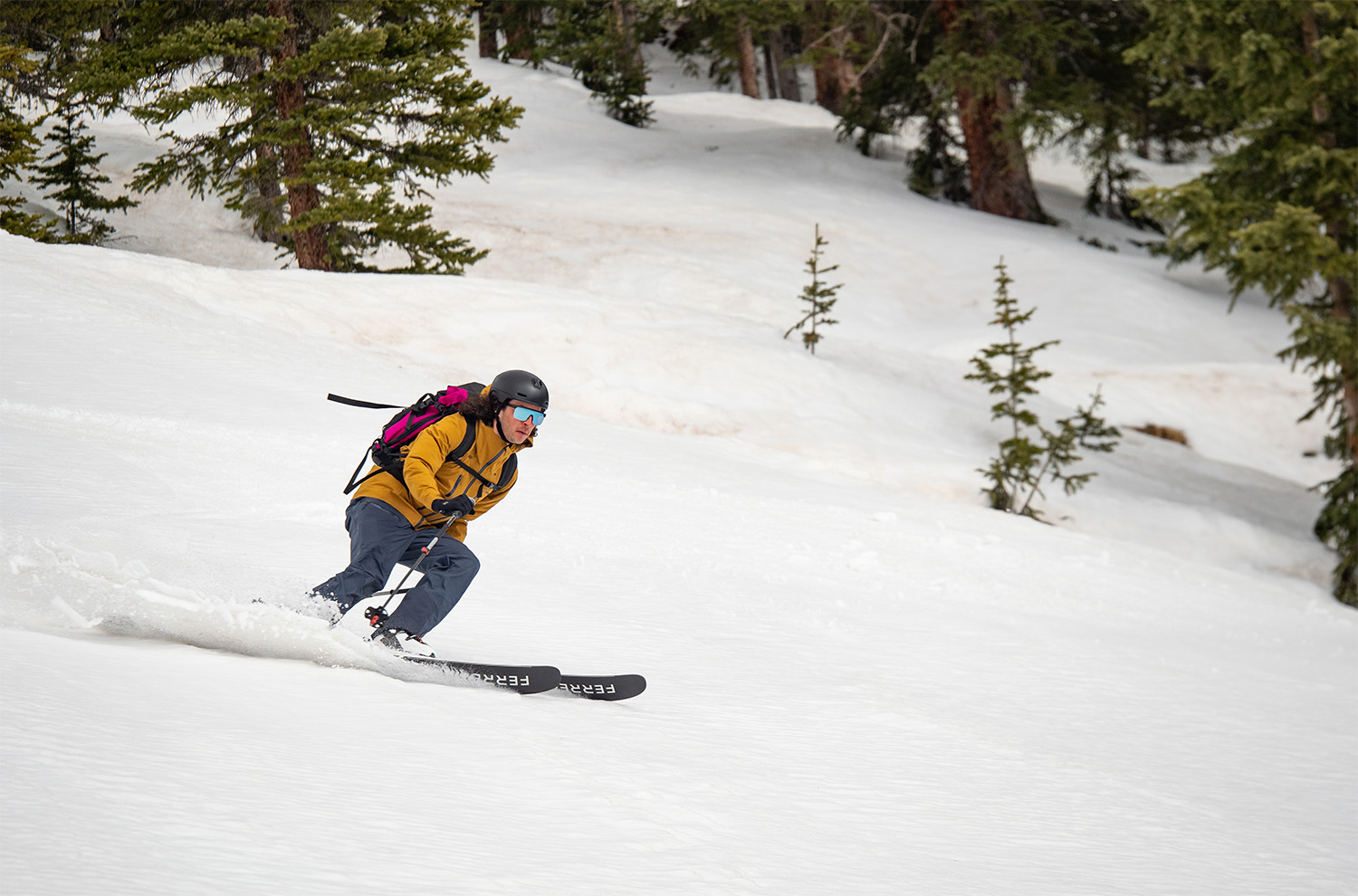
Luke: Agreed. I think the Maestrale RS’s flex pattern will hit a happy medium for lots of backcountry skiers. There are many stiffer alternatives out there, but very few of those boots weigh as little or walk as well as the Maestrale RS.
Flex ratings are far from standardized, but I’d probably call the Maestrale a “120” rather than a “125” flex. Its flex pattern is pretty soft through the initial quarter or so of its downhill range of motion. However, it smoothly ramps up the more you lean into it. On skis from 90–110 mm underfoot in a wide range of conditions, I didn’t feel like the Maestrale RS was really holding me back from skiing as hard as I want in the backcountry.
There are lots of touring boots (including Scarpa’s 4-Quattro XT & Pro) with stiffer overall flex patterns that ramp up more quickly in stiffness vs. the Maestrale RS. But most of them weigh more and/or don’t offer as much usable range of motion on the skin track. It’s also worth noting that the Maestrale RS offers a bit more support than some similarly light boots, most notably the first-gen Fischer Transalp Pro and Atomic Backland XTD 120 Carbon, though those boots offer more usable range of motion in walk mode.
In general, I don’t tend to drive my skis as hard or get in the air as often in the backcountry as I do in the resort; for the latter, I prefer a pretty traditional 2-piece alpine boot with a legit “130” flex that ramps up pretty quickly. In the backcountry, I’m often skiing at slower speeds and/or in weirder, less consistent snow, so I don’t mind (and sometimes prefer) a boot with a softer initial flex pattern like the Maestrale RS. I find that it can help me feel like I’m “in the flex pattern” of the boot with less force / speed required, and it helps take the edge off vibrations / impacts when skiing cruddy snow on light skis.
If I could only have one boot and was going to be riding lifts for more than ~30% of my time in it, I’d opt for something much heavier and a bit stiffer than the Maestrale RS. While I’m sure I could adapt to its flex pattern in the resort, I much prefer the smoother, more damped ride quality of heavier boots (e.g., Tecnica Cochise, Atomic Hawx XTD series) when I’m lapping the resort. If I can have two boots, I’d happily use the Maestrale RS for all the touring I do, but then I’d only ski the resort in a dedicated, fixed-cuff alpine boot.
I don’t tend to be all that sensitive to the forward lean of boots, and I got along fine with the Maestrale RS in both its stock 16° setting and more upright 14° setting (I used the liner spoiler throughout, for the same calf-tightness reasons as Dylan).
Lastly, there’s the question of whether the Maestrale RS is too stiff for your preferences or needs. As we’ve touched on, their are lots of lighter touring boots out there, and most of them provide a nicer overall uphill experience than the Maestrale RS. Most of them also don’t match the Maestrale RS’s maximum stiffness, don’t stiffen up as smoothly as you flex them, and/or don’t provide as much lateral stiffness.
I enjoy touring in these sorts of ~1000-1300-g boots in many backcountry scenarios. If I’m skiing soft snow and/or making lots of smaller, lower-speed turns, I find them adequate on the downhill and a dream on the way up. Where I find them lacking compared to the Maestrale RS and stiffer freeride-touring boots is (1) when I’m hitting drops over a couple feet in height, (2) when I’m making big, fast turns, and (3) while trying to really bend and carve skis at high edge angles on firm snow. If you never or rarely do those things and are interested in gaining some more uphill efficiency, it might be worth trying on some lighter boots like the Scarpa F1 LT, Salomon S/Lab MTN Summit, Tecnica Zero G Tour Pro, etc.
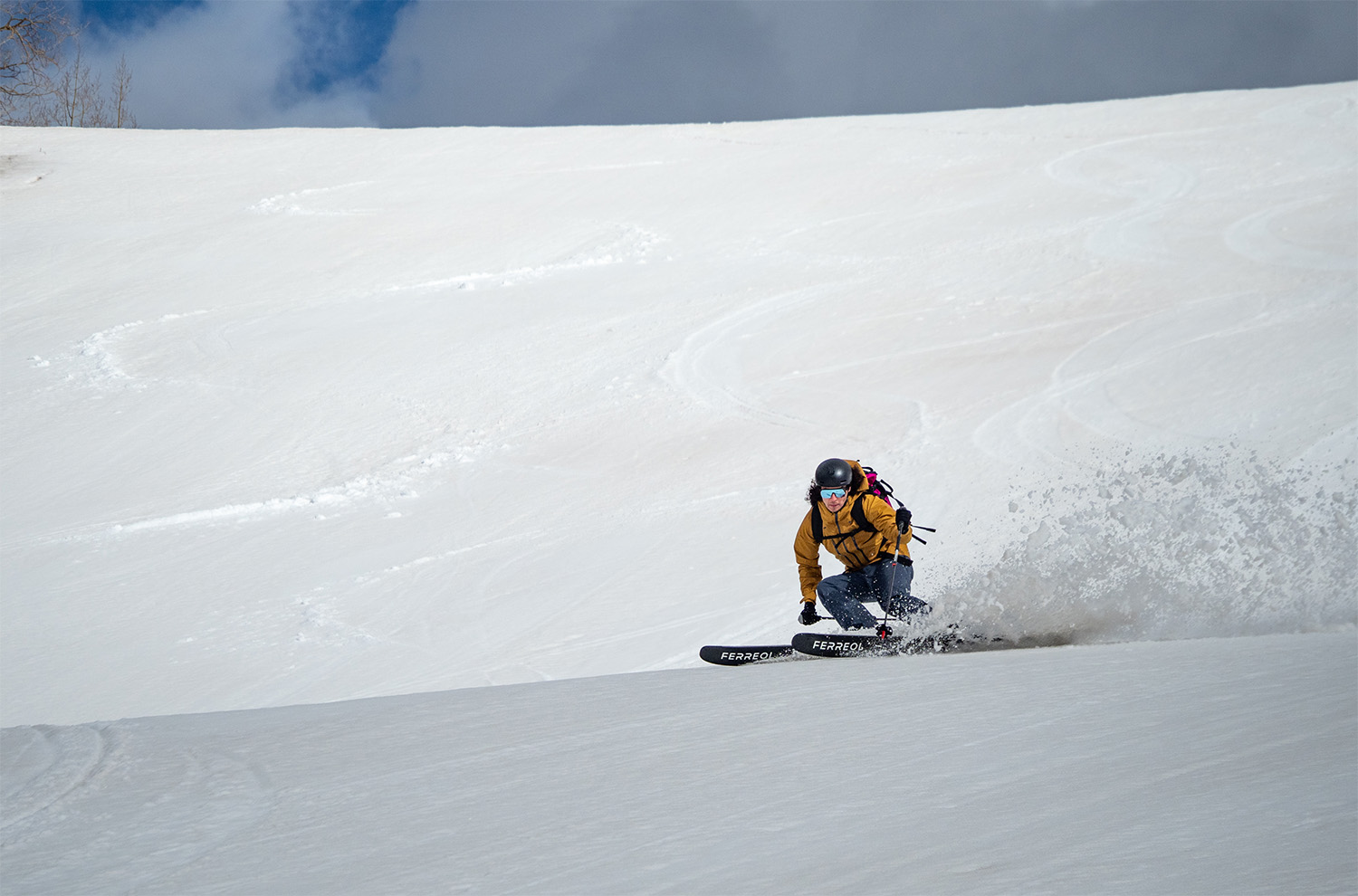
Who’s It For?
Dylan: The Maestrale RS warrants trying on if you want a touring boot with a very balanced mix of uphill and downhill performance. It’s a particularly interesting option if you find heavier “130 flex” boots not efficient enough on the uphill, but you want better downhill performance than what’s offered by most of the lighter (<1300 g) boots out there.
In terms of uphill efficiency, most of the boots that outperform the Maestrale RS are notably lighter and not as supportive of aggressive downhill skiing. On the other hand, the Maestrale RS’s limitations on the downhill will likely only be found by heavier skiers and/or those expecting alpine-boot-like performance out of a touring boot.
Luke: The Maestrale RS strikes me as a great ‘generalist’ touring boot. As we’ve outlined throughout this review, it’s neither the stiffest touring boot you can find, nor is it the best on the uphill. But I could ski it all season without it seriously detracting from my experience — on the way up or while skiing back down.
Bottom Line
The Scarpa Maestrale RS warrants a close look from those who like to ski pretty hard in the backcountry, but who don’t want to skin uphill in a fairly heavy (~1500+ g) freeride boot. There are better options for folks who clearly prioritize either uphill or downhill performance, but the Maestrale RS provides a balance of both that would satisfy the needs of many backcountry skiers.
Get More Info: Our Flash Reviews & Winter Buyer’s Guide
BLISTER+ members and those who purchase our Digital Access Pass can check out the Flash Review below to read our initial on-snow impressions. Don’t have access? Get our Digital Access Pass to read all of our Flash Reviews and Deep Dive comparisons. Or, even better, become a BLISTER+ member to get that + the best worldwide Outdoor Injury Insurance, exclusive deals and discounts on skis, personalized gear recommendations from us, access to our annual Winter Buyer’s Guide, and much more.
On that note, you can also get our thoughts on 300+ skis, 60+ boots, and tons of other products in our 2024-2025 Blister Winter Buyer’s Guide. BLISTER+ members already have access, or you can purchase the guide on its own to get the the print copy + digital version at no extra cost, or the digital-only edition.

2024-2025 Blister Digital Winter Buyer’s Guide
350+ skis, 65 boots, and 280+ pages of honest, accurate product reviews and comparisons. Order our 24/25 Winter Buyer’s Guide or become a BLISTER+ member to read the Digital Guide NOW.
If you’re already a Blister Member or have purchased the 24/25 Winter Buyer’s Guide and are seeing this message, please log in and then refresh this page.
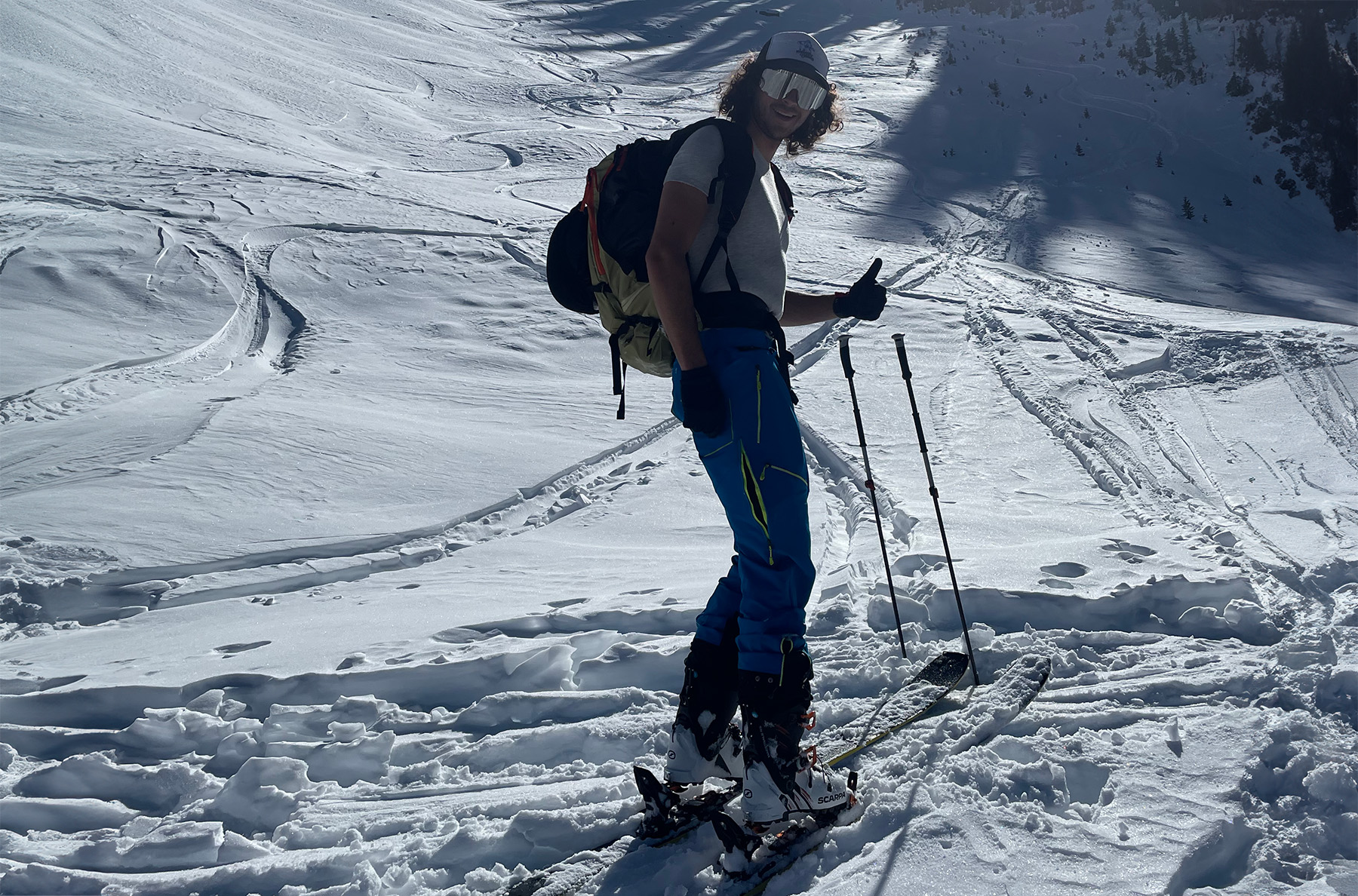
Flash Review: 23/24 Scarpa Maestrale RS
Update 11.6.23: We’re skiing again! Check out Dylan Wood’s thoughts after he got his chance to try the updated Scarpa Maestrale RS.
Blister’s Flash Reviews and Deep Dives are accessible to those who purchase one of our paid subscriptions
To get our comprehensive Deep Dives and our initial, unfiltered reports on new gear, become a member and receive many other services, deals, and discounts.
If you’re already an active member, please log in.
(If you’re already logged in and a member in good standing and seeing this message in error, please refresh this page in your browser.)


This new version of the Maestrale RS actually fits me quite well. It’s disappointing the cuff height is so low. Measured accurately, inside the cuff, it’s about 3 cm lower than the Zero G. Definitely noticeable to me while skiing.
More minor but still annoying, the Z closure wire pretty much always comes off the buckle while open, in touring mode. It needs a “keeper wire” or something.
The touring range of motion is great.